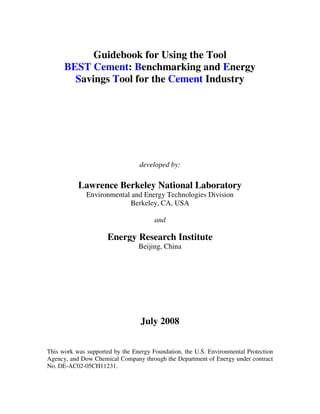This document provides a guidebook for using the Benchmarking and Energy Savings Tool (BEST) Cement, which was developed to benchmark and assess energy savings opportunities in the cement industry. The summary includes:
1. The tool uses a process-based modeling approach to estimate energy usage at each stage of cement production and compares a user's plant to Chinese and international best practice benchmarks.
2. Key inputs required from the user include annual production rates of raw materials, clinker, cement, and energy consumption by fuel type.
3. The tool provides energy usage estimates for each stage of cement production based on data from Chinese plants and literature sources to determine Chinese and international best practice values.








































































































